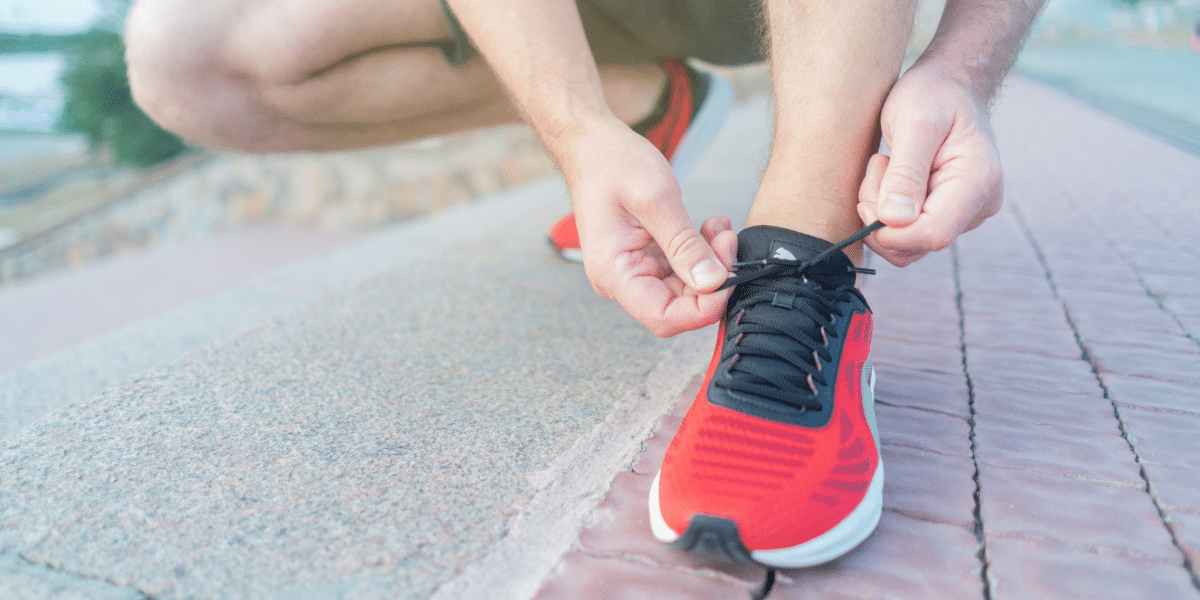By: Jacob Maslow
Running is an exhilarating way to stay fit, but what happens when your feet start protesting? Keeping your feet healthy is crucial for every runner, whether you’re a beginner or a seasoned marathoner. In this post, we’ll explore practical tips and expert advice to ensure your feet remain in peak condition, helping you to run smoothly and pain-free.
The Importance of Foot Health for Runners
Your feet are the foundation of every stride you take. They absorb the impact of running and propel you forward, making foot health paramount for performance and injury prevention. Ignoring foot care can lead to chronic pain and sidelining injuries, which is why understanding how to maintain healthy feet is essential. In this guide, we’ll cover everything from common foot injuries to the best shoes and care routines.
Understanding Common Foot Injuries and Prevention Techniques
Plantar Fasciitis
One of the common foot injuries among runners is plantar fasciitis, characterized by sharp pain in the heel or arch of the foot. This condition arises from inflammation of the plantar fascia, a thick band of tissue running along the bottom of your foot. Preventing plantar fasciitis involves choosing supportive shoes, stretching your calves regularly, and avoiding sudden increases in running intensity.
Proper warm-up routines and strengthening exercises can also reduce the risk. Focus on exercises like calf raises and toe stretches to enhance flexibility and strength. In case of persistent pain, consult a healthcare professional for targeted treatment options.
Achilles Tendonitis
Achilles tendonitis is another ailment that plagues runners, causing pain and stiffness in the Achilles tendon at the back of your ankle. This injury often results from overuse, improper footwear, or inadequate stretching. To prevent Achilles tendonitis, ensure you’re wearing shoes with adequate heel support and gradually increase your training intensity.
Stretching the Achilles tendon and strengthening the calf muscles can also help. Eccentric heel drops are particularly effective for building tendon resilience. If you experience symptoms, rest and apply ice to reduce inflammation.
Stress Fractures
Stress fractures occur when repetitive force causes tiny cracks in the bones of your feet, typically in the metatarsals. These fractures are often the result of overtraining, poor footwear, or insufficient bone density. To prevent stress fractures, follow a balanced training schedule that includes rest days and cross-training activities.
Ensuring you have sufficient calcium and vitamin D intake is also critical for bone health. Incorporate weight-bearing exercises to strengthen your bones, and always listen to your body—pain is a signal that something needs attention.
Premier Practices for Choosing the Right Running Shoes
How to Select Shoes That Fit Your Feet
The foundation of healthy running feet starts with the right shoes. Ill-fitting footwear can lead to blisters, calluses, and more severe injuries. When shopping for running shoes, focus on finding a pair that fits well. Your shoes should provide ample room for your toes, snug support for your heel, and avoid any tight spots that could cause friction.
Visit a specialty running store for a professional fitting. Many stores offer gait analysis to determine your running style and recommend shoes that match your specific needs. Remember, the right shoe can make all the difference in your comfort and performance.
Understanding the Importance of Cushioning and Support
Cushioning and support are critical elements of running shoes. Cushioning helps absorb the shock of each step, reducing the impact on your feet and joints. Support, on the other hand, ensures that your feet remain stable, preventing excessive pronation or supination.
Choose shoes with the right balance of cushioning and support based on your foot type and running style. For instance, if you have high arches, look for shoes with extra cushioning. If you have flat feet, opt for shoes with more structured support to maintain proper alignment.
How to Maintain Healthy Feet and Prevent Injuries
Tips on Proper Foot Care
Foot care extends beyond selecting the right shoes. Regular maintenance is essential for keeping your feet in peak shape. Start by washing your feet daily and drying them thoroughly, especially between the toes, to prevent fungal infections. Trim your toenails regularly to avoid ingrown nails and ensure your socks are clean and dry.
Moisturize your feet to prevent dry, cracked skin, and consider using foot powders to keep them dry during long runs. Pay attention to any changes in your feet and address issues promptly to prevent minor problems from escalating.
Importance of Stretching and Strengthening Exercises
Stretching and strengthening exercises are vital for maintaining foot health and preventing injuries. Stretch your calves, Achilles tendon, and plantar fascia regularly to keep them flexible and reduce the risk of strain. Incorporate exercises like toe curls and arch lifts to strengthen the muscles supporting your feet.
Additionally, balance and proprioception exercises can improve your stability and foot mechanics. Simple activities like standing on one foot or using a balance board can enhance your foot’s ability to handle the demands of running.
The Role of Nutrition and Hydration in Foot Health
Nutrition and hydration play a significant role in overall foot health. Adequate intake of essential nutrients like calcium and vitamin D is crucial for strong bones and preventing stress fractures. Incorporate a balanced diet rich in fruits, vegetables, lean proteins, and whole grains to support your body’s needs.
Hydration is equally important, as dehydration can lead to muscle cramps and decreased performance. Drink water regularly throughout the day and especially before, during, and after your runs to keep your muscles and tissues hydrated and functioning optimally.
Recovery and Treatment for Foot Injuries
When to Rest, Ice, Compress, and Elevate (RICE)
If you sustain a foot injury, the RICE method is a reliable first-aid approach. Rest the injured area to prevent further damage, apply ice to reduce swelling and numb the pain, compress the area with an elastic bandage to limit swelling, and elevate your foot above heart level to decrease swelling.
These steps can help manage acute injuries and facilitate healing. However, if the pain persists or worsens, seek professional medical advice to ensure you receive appropriate treatment.
Seek Professional Help: Podiatrists and Physical Therapists
For persistent or severe foot injuries, consulting a podiatrist or physical therapist is essential. These professionals can diagnose the underlying cause of your pain and recommend targeted treatments or rehabilitation programs. They can also provide custom orthotics or suggest modifications to your running form to prevent future injuries.
In some cases, specialized treatments like bunion surgery may be necessary. If you’re considering this option, remember that travel for bunion surgery might be required to find the best specialist for your needs.
The Rundown
Keeping your feet healthy is the key to enjoying a long, pain-free running career. By understanding common foot injuries and their prevention, choosing the right shoes, maintaining proper foot care, and incorporating stretching and strengthening exercises, you can protect your feet from damage. Additionally, paying attention to nutrition and hydration, and seeking professional help when necessary, will ensure your feet remain in optimal condition.
Remember, your feet are the foundation of your running success. Treat them well, and they’ll carry you through countless miles and exhilarating experiences. For more personalized advice and support, consider booking a consultation with a foot health specialist who can help you tailor your care routine to your specific needs.
Disclaimer: This content is for informational purposes only and is not intended as medical advice, nor does it replace professional medical expertise or treatment. If you have any concerns or questions about your health, always consult with a physician or other healthcare professional.
Published by: Khy Talara

















